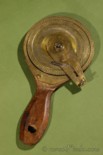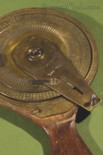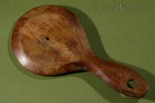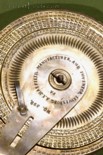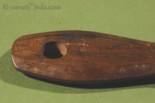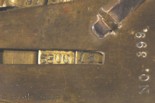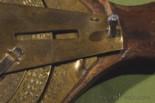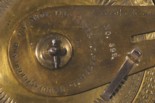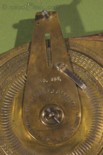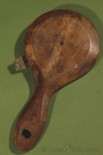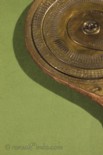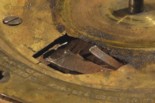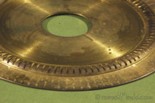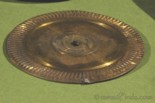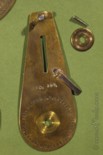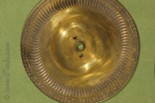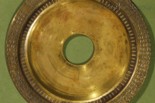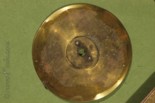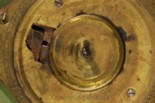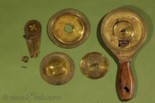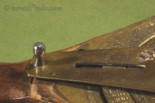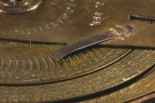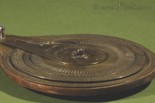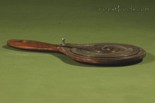Exceedingly rare and early American Adding Machine invented and patented on September 26, 1854, by Aaron L. Hatfield von Lewisburg, Pennsilvania, USA.
Patents, click on any image to see larger image!
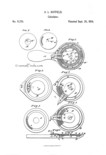
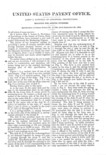
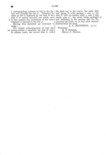
There is one of these Adders in the collection of the Smithsonian Institution in Washington. The Hatfield predates everything known to me and which is manufactured in the USA, such as the Hill 1857, Winter 1859, Fowler 1863, Webb 1868, Addist 1869, Groesbeck 1870, and others. The simple adder patented by Samuel S. Young of Eaton OH, on July 24, 1849, Patent # 6.602 pre-dates the Hatfield. However, the Young machine is not really an adding machine.
To see the Hatfield in the Smithsonian Institution,
click here!
The specimen included in the collection of the Smithsonian Institution is the actual patent model, there is no engravings present at all. The little window to show the result is also looking different from that of the manufactured machine pictured here.
There is an actual production model in the scientific instruments collection of the Harvard University the serial number is 214 of that machine. To see that machine,
click here!
It is possible that the Hatfield is the first manufactured Adding Machine built in the USA. In Comparison, the first manufactured typewriter was only produced about twenty years later, the Sholes & Glidden Type Writer, in 1876.
The Hatfield Adder offered here is all original and no parts are missing. The machine measures 4-3/4" in diameter. The machine is capable to add numbers up to 9,999. The largest number which can be added in one operation is 99. To operate the machine, you simply move the arm counter clockwise to the corresponding number on the outer circumference of the base of the machine which is pictured in pictures no. 12 and 19, and then move it back clockwise to the stop which is pictured in picture no. 19 right next to the number 97. The machine has a carry over for every count of 100. The little pin which is performing the carry over is pictured in the foreground at the outer circumference of the disc pictured in picture no. 14. The result appears in the little window of the moving arm pictured in picture no. 6. It shows the numbers of the hundreds and thousands. The two zeros for the ones and tens need to be replaced by the two numbers shown on the inner disc for the first two digits, the ones and the tens. One could also argue that the two numbers need to be added. As an example, the picture no. 6 shows the result 5,818. The two steel springs shown in picture no. 12 and 19 prevent the two discs with the numbers from turning clockwise as the arm is being moved back to the stop to add the number to be added in that particular operation. The adder has the following engraving:
"A. L. HATFIELD INVENTOR AND MANUFACTURER LEVISBURG PA." The serial number is 399. The wooden frame of the machine measures 9-5/8", there is also a hole in the handle to hang the machine on the wall.
Condition:
This adder or adding machine is fully functional and in good to very good condition.
History:
This and is listed in the 1850 US Census as living in Lewisburg, Union County, Pennsylvania. By then he was 31 years old, had a wife (Ida A. Hatfield, born 1827) and two children, and worked as a watchmaker. The next US Census in 1860 lists Aaron L. Hatfield as 40 years old, born in Pennsylvania and living in Green Springs, Sandusky, Ohio. By then he worked as a photographer (ambrotypist). No family is listed. The 1880 US Census lists an Aaron L. Hatfield, 61 years old, widowed, and a watchmaker, living in Constantine, St. Joseph County, Michigan.
Aaron Hatfield died on 9 December, 1898, in Three Rivers, Michigan, where he hold a small jewelry and musical instruments store. Last years of his life he was living a secluded life above his store.
In addition to the patent for the above-mentioned machine for adding numbers, Aaron Hatfield took out three other US patents. The US patent no. 103327, was for an improvement in pruning shears, and was taken out in 1870, when Hatfield was living in Clyde, Ohio. The next patent no.143759, was for an improvement in pumps, and was taken out in 1873, when Hatfield was still in Clyde. The last patent no. 199705, was for an improvement in bag holders, and was taken out in 1878, when he was living in Constantine.
The forgoing biography was written by by Georgi Dalakov and is published at the well made website, computer-timeline.com.
Inventory Number 09273;
Sold!
